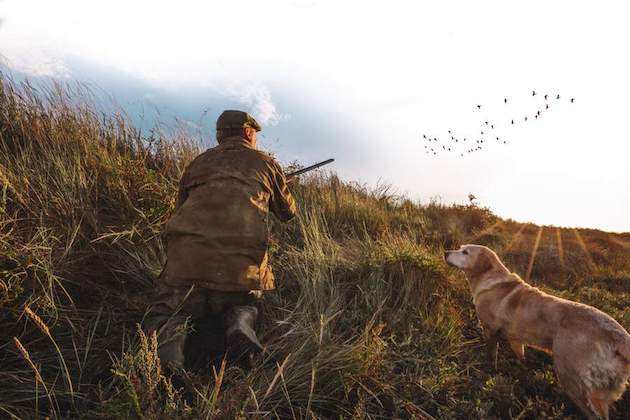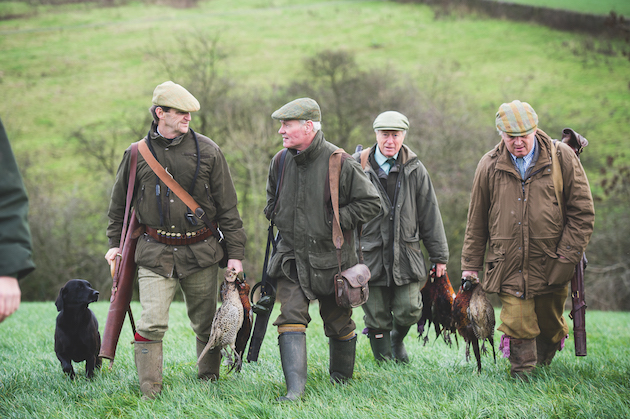How does the public perceive our sport?
With the future of fieldsports under the spotlight, Alasdair Mitchell examines how attitudes to shooting have changed in recent decades

Wildfowling is a sport that has worked hand in hand with conservation over the years
Public perception of fieldsports
At the age of 11, Robin Marshall-Ball was walking through a Welsh village with his Midland 20-bore under his arm when a police car drew up and asked him what he was doing.
Robin explained that he was on his way to shoot pigeon on a certain farm. The officer scoffed and said there were many more pigeon on another farm, which he named. “Get yourself along to there,” said the officer. “I’ll let them know you’re coming.” Then he drove off.
Fifty years ago, when Kenn Ball was at school in Northumberland, some of the boys would go off rat shooting as soon as the bell rang at the end of the last lesson. “Eventually, we were given letters for our parents, asking them to stop us bringing our air rifles to school,” he said.
When I was a sixth former, I used to wander around my school grounds with my shotgun, looking to pot the odd pigeon or rabbit. It was a boarding school in rural Buckinghamshire. Lots of boys came from shooting families. We used to keep our guns in the school armoury, booking them out under the beady eye of the Cadet Force sergeant. We were allowed to use them without supervision, as long as we had certificates and written permission. This wasn’t in the dim and distant past; it was in the mid to late 1970s.

A pub scene from the 1930s: public attitudes towards firearms are now markedly different
Fresh air and a rifle
Tiggy Legge-Bourke joined the royal family as a nanny in the 1990s. By all accounts, she was an exponent of robust outdoor activity for her princely charges. She famously said: “I give them what they need at this stage: fresh air, a rifle and a horse.” Even then, this caused a certain stir, but nothing like it would today.
Ian Coghill remembers travelling on a bus with his shotgun in rural Worcestershire when he was a boy. He reckons that the end of military conscription marked something of a turning point. “When we still had a citizen army, we had people from urban backgrounds who had a familiarity with firearms,” he pointed out.
The last conscripted servicemen left the armed forces in May 1963. The subsequent demonisation of guns was boosted by the antics of drug gangs and the legislative ratchet was tightened in the years following the horrific mass murders at Hungerford (1987) and Dunblane (1996).
Even recently, conservation bodies such as the RSPB reached out to organisations such as BASC to train nature reserve wardens in vermin control. Today, the RSPB is very coy about its own deer and predator control activities, scared of alienating its urban membership base.
When the realities of wildlife conservation meet fundraising imperatives, the latter wins every time.
The RSPB wasn’t overtly anti-shooting when I was a boy. As the EU’s common agricultural policy, with its butter mountains and milk lakes, began to degrade the British countryside, practical conservationists knew that the only way to conserve biodiversity was to work with the rural shooting community. I was a member of the RSPB’s Young Ornithologists’ Club.
Relations between the conservation establishment and the wildfowling community, in particular, were pretty good. Many of the UK’s coastal nature reserves were set up with the help of wildfowlers in the 1960s and 70s. Sir Peter Scott, an avid former wildfowler who founded the Wildfowl Trust, wrote the preface to BASC’s book, The New Wildfowler (third edition,1989).
Attitudes to shooting soured as the conservation bodies became bigger and felt they didn’t really need to work with us.
In 1960, RSPB membership was only 10,000. It hit 50,000 by 1970, then 300,000 in 1980 before reaching the magic one million mark in 1997. Interestingly, it hasn’t grown much since then, recording about 1.1million members today.
Frustration at the stalling of the RSPB’s membership growth may, perhaps, have led to a more aggressive stance. “Big and angry” might be a valid description of the RSPB today. Certainly, it doesn’t like criticism. As Ian Coghill says: “It’s like a puffed-up balloon; the bigger it gets, the thinner its skin.”
Illegal persecution of raptors is a key campaigning issue for the RSPB. There’s nothing that gets the donations flowing like a purported extinction crisis. This is despite the fact that most UK raptor species have increased to levels that would never have been imagined 50 years ago.
Today, the nefarious actions of those few who persist in illegally killing raptors, in this age of hidden cameras and social media, are used to poison public attitudes towards the wider shooting community.
Then we have the long-term increase in the numbers of gamebirds released and so-called big bag shoots. The public instinctively recoils from anything that smacks of greed, excess and privilege. In recent years, other issues, such as lead shot, have also served to undermine the conservation credentials of shooting.

The rise of syndicated game shoots means fieldsports can be enjoyed by people of all backgrounds
Curiosity
Yet it is not all bad news and it would be a mistake for shooting to adopt a siege mentality. Ian Coghill says: “We shouldn’t assume the public are always hostile. Most people are curious. I’ve got a lot of people into shooting by taking them beating.”
Or look at stalking. As deer numbers have grown, so stalking has also grown in terms of participation and public acceptance. Even Chris Packham has said he accepts the need to control deer with a rifle — despite being attacked by the usual suspects for saying so.
Today, both deerstalking and game shooting are vastly more accessible than when I was a boy. Kenn Ball points to the rise of syndicated game shoots, which can be enjoyed by people from all backgrounds.
Ian Coghill observes that, in his youth, the most popular wildfowling days were weekends. But that has changed. “Nowadays, it’s easier to get a spot on the foreshore on a Saturday because so many club members are away shooting pheasants inland.”
Another key factor in public acceptance of shooting, according to Robin Marshall-Ball, has been the rise of the celebrity game chef. The use of game meat as nutritious food is something the public readily accept. The stocking of game in supermarkets is a major PR win and one we should do everything to support.








